Soyo KT333 Dragon Ultra — VIA KT333 Motherboard Roundup
by Anand Lal Shimpion June 13, 2002 5:41 AM EST
- Posted in
- Motherboards
0 Comments
|
0 Comments
IndexDDR333: The Athlon’s RDRAMOn-Board Audio — No need for add-in cardsABIT KX7-333ABIT AT7ASUS A7V333DFI AD76 RAIDECS K7VTA3EPoX 8K3A+Gigabyte GA-7VRXPMSI KT3 UltraShuttle AK35GT2/RSoyo KT333 Dragon UltraThe Performance TestOverall Motherboard PerformanceOn-board Audio Quality & PerformanceOnboard Audio PerformanceIDE RAID PerformanceFeature Comparison TableFinal Words
Soyo KT333 Dragon Ultra
|
Motherboard
|
|
|
CPU
|
Socket-462
|
|
Chipset
|
VIA
|
|
Bus
|
100
|
|
Core
|
1.
|
|
AGP
|
1.5V/1.6V/1.7V/1.8V
|
|
DRAM
|
2.6V/2.7V/2.8V
|
|
Memory
|
3
|
|
Expansion
|
1
|
|
Onboard
|
HighPoint
|
|
Onboard
|
VIA
|
|
Onboard
|
Realtek
|
|
Onboard
|
CMedia
|
Click to Enlarge
Soyo has definitely taken the right steps with their past few motherboard releases
to complete the transition from a manufacturer that was rarely talked about
to one of the more popular manufacturers in our community.
Continuing on with their newly found tradition, Soyo released a KT333 based
motherboard for their Dragon line of products — the KT333 Dragon Ultra. Soyo
also produced a version with a silver/platinum colored PCB; the board is identical
to the regular KT333 Dragon Ultra in every way other than the color of the PCB.
Soyo claims that the platinum PCB dissipates heat better, but not only is that
incredibly difficult for us to validate, it doesn’t offer any truly tangible
gains.
Click to Enlarge
The board features 5 PCI slots and an AGP Pro50 slot, which is powered using
a 4-pin drive power connector. You’ll also find three DIMM slots on the board,
all of which can be populated and run at DDR333 speeds without sacrificing stability.
The VIA VT6202 controller provides USB 2.0 support which Soyo takes advantage
of using an external bay that installs in either a 3. 5″ drive bay or a
5″ drive bay or a
5.25″ bay with an included bracket. This bay provides front USB 2.0 port
access for a total of four ports, and it also features a LAN activity light
for use with the on-board Ethernet (driven by a Realtek controller). The two
USB ports on the board itself are USB 1.1 compliant and are driven by the 8233A
South Bridge.
The KT333 Dragon Ultra features a CMedia 8738 6-channel audio controller; Soyo
takes advantage of the 6-channel functionality by included two additional 1/8″
jacks on a separate bracket along with SPDIF in and out ports (optical &
RCA for both).
Bringing the feature set to a close we have the HPT372 controller by High Point
that brings RAID functionality to the board. The BIOS offers Thoroughbred support
today and the usual overclocking features including 1MHz FSB increments and
Core/AGP/DDR voltage control.
The only problem we encountered during our testing of the KT333 Dragon Ultra
was that it would not POST with our Audigy card installed. Soyo was surprised
Soyo was surprised
when we informed them of this since it was the first time they had heard it;
all other PCI cards seem to work fine and our Audigy card worked perfectly fine
in all of the other motherboards we tested in this roundup as well. At this
point, we’re not sure who is at fault for the incompatibility or whether it’s
limited to our card specifically.
Other than the issue with the Audigy, the KT333 Dragon Ultra performed flawlessly
during our testing.
Shuttle AK35GT2/R
The Performance Test
IndexDDR333: The Athlon’s RDRAMOn-Board Audio — No need for add-in cardsABIT KX7-333ABIT AT7ASUS A7V333DFI AD76 RAIDECS K7VTA3EPoX 8K3A+Gigabyte GA-7VRXPMSI KT3 UltraShuttle AK35GT2/RSoyo KT333 Dragon UltraThe Performance TestOverall Motherboard PerformanceOn-board Audio Quality & PerformanceOnboard Audio PerformanceIDE RAID PerformanceFeature Comparison TableFinal Words
Tweet
PRINT THIS ARTICLE
|
|
3DNews Processors and memory AMD AMD Athlon XP processors based on the new Thoroughbred core The most interesting news
⇣ Contents Motherboard Compatibility 0. nine0007
Please note that the support situation may change as new BIOS versions are released. Thermal Protection Almost nine months ago, we published an article on CPU overheating that generated a lot of discussion. The article contains a video showing the dramatic combustion of AMD Athlon on the Palomino core (which, by the way, has a thermal diode) when the cooler is removed. On the Soltek board, overheating protection is enabled by a jumper But this method is already outdated — determining the temperature using a thermistor Thermal protection on the latest KT333 board from ASUS The same — from Soltek We recently tested 18 motherboards based on the KT333 chipset, and only ASUS and Soltek used a thermal diode. Simultaneously with the release of the new core, AMD changed its requirements for motherboard manufacturers. nine0007 OverclockingWhen a new kernel comes out, we always look forward to the joy of overclocking it, but unfortunately you can’t say the same about Thoroughbred. We have tested four Thoroughbred samples shown below.
We tested the Athlon XP 2200+, 1900+, 1800+ and 1700+, all Thoroughbred core processors. Overclocking was not difficult, since the L1 bridges were not grooved, as can be seen below.
To L1 bridges, it is enough to apply the «pencil method» to unlock the multiplier of One of the indicators of the perfection of the technical process is the potential for overclocking the processor with standard cooling and supply voltage. We performed such an operation for each of the processors. The results are presented below.
As you can see, the Thoroughbred process will take some time to mature. Let’s see how much we can overclock processors at 1.85 V.
As you can see, overclocking is not very encouraging, although it still turned out a little. Coolers: we remove cheap modelsNew AMD recommended cooler for Athlon XP 2200+ with high contact pressure With the transition from Athlon XP based on Palomino core to Athlon XP based on Thoroughbred, the company has increased its attention to CPU cooling issues. The fact is that the surface of the processor has decreased by 40%, therefore, heat now needs to be transferred through a smaller area. And here it is not clear to us why AMD does not start using a heat spreader, as on the Pentium 4 or Hammer. As we already mentioned, AMD has changed its recommendations for OEMs since June 10th. nine0007 Only a few coolers can be used with the processor, and the contact pad of the cooler and the processor must be made of copper or any other material with adequate heat transfer.
Recommended copper pad for coolers Cooler from Taisol
Next page →← Previous page
⇣ Contents If you notice an error, select it with the mouse and press CTRL+ENTER. Related materials Permanent URL: https://3dnews.ru/172080/page-1.html Tags: ⇣ Comments |
|||||||||||||||||||||||||||||||||||||||||||
the main trends of «motherboard construction» or once again about a non-standard approach (page 4)
We will focus on Chaintech Zenith ZNF3-150, a model based on the Nvidia nForce3 150 chipset for AMD Athlon 64 processors in Socket 754.
In addition to the bright packaging, we see gold-plated connectors on the rear panel and the same chipset heatsink.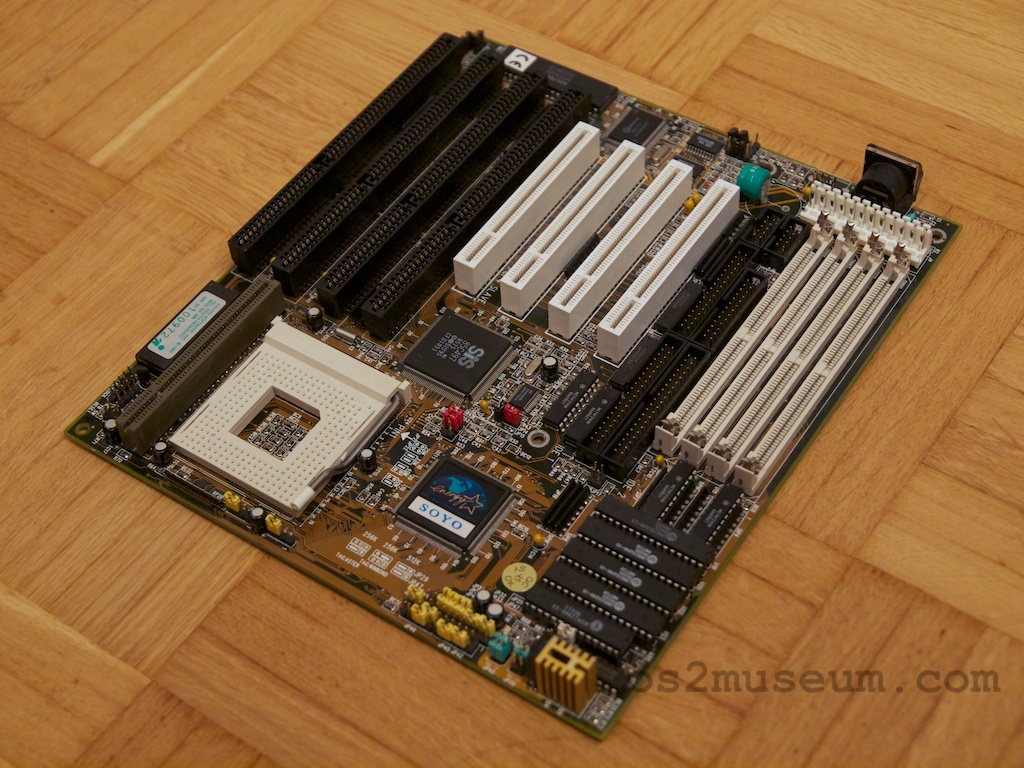 Overclocker’s orange PCI slots and similarly colored RAM slots go very well with the dark brown PCB.
Overclocker’s orange PCI slots and similarly colored RAM slots go very well with the dark brown PCB.
The branded housing of the board’s power stabilizer is also decorated in a «golden» style, which is made according to a four-phase system (most of the similar boards of that time used a three-phase system). This system is branded RadEX and provides active cooling using a 20mm fan that blows hot air out. The BIOS system contains a sufficient number of basic settings designed to help the overclocker with overclocking the processor. nine0007
recommendations
The manufacturer did not deprive the board and all sorts of additional controllers. The disk subsystem is complemented by a Silicon Image SiI3114 controller, FireWire uses a VIA VT6306 chip, a gigabit network controller is represented by Broadcom BCM5788, an additional four-port USB controller is based on VIA VT6202, and a good eight-channel (7.1) VIA Envy24PT audio controller is used in addition. We must pay tribute, the model turned out to be very functional and not deprived of design delights. nine0007
But only one model can boast of the most turbojet exhaust system — Gigabyte G1975X based on the Intel 975X chipset for Intel processors in the LGA 775 design. Take a look:
The cooling system is called Turbojet. Four 40mm fans at the ends of the «wind tunnels» are designed to carry all the heat out of the PC case. Apparently, the engineers liked the aviation theme.
The only disadvantage of such a turbojet system is noise. And those who were ready to sacrifice silence for the sake of comfort chose the Gigabyte G1-Turbo, and these, apparently, were extreme overclockers and hardcore gamers. nine0007
However, the manufacturers used many words and epithets to endow their best models of motherboards: Ultra, Super, Extreme, Plus and so on. In part, these words were part of the marketing policy, in part they were not. Below we show a couple of such examples.
Soyo KT333 Dragon Ultra Platinum Edition — this is the name of the mainboard of the Taiwanese manufacturer Soyo based on the VIA KT333 chipset for AMD Athlon XP processors. What is hidden behind such a long and pretentious name? nine0007
What is hidden behind such a long and pretentious name? nine0007
The Dragon series symbolizes the most technologically advanced solutions of this manufacturer. Ultra Platinum — speaks of equipment and delivery. As you can see in the picture, the board is equipped with a number of additional controllers. HighPoint HPT372 is used as a RAID controller, VIA VT6202 is responsible for USB 2.0, C-Media CMI8738 is responsible for 5.1 sound, and Realtek RTL8100B is responsible for the built-in network controller.
Among other things, the board provides an AGP Pro graphics port with an additional Molex power connector, a remote 5.25 Sigma Box panel with a slot for reading memory cards and two USB ports, a remote bracket for the rear panel of the computer with audio outputs and SPDIF connectors of TosLink and Coaxial types , three IDE connectors and other little things. nine0007
Ordinary mainboards of that time could not even come close to boasting such a variety of delivery and additional functions.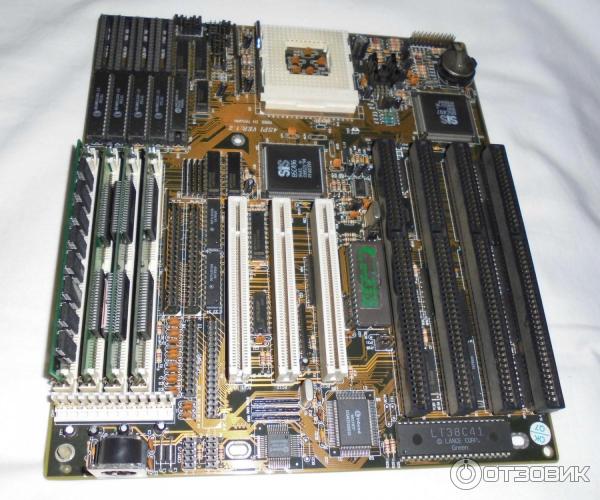 On top of that — an unusual platinum PCB color and an unusual color scheme for slots and connectors. As for performance, despite all the decorations and functionality, the Dragon board did not reach the products of ABIT, EPOX and ASUS, but as a basis for creating a retro PC paired with a 3DFX Voodoo5500 video card, it still fits perfectly.
On top of that — an unusual platinum PCB color and an unusual color scheme for slots and connectors. As for performance, despite all the decorations and functionality, the Dragon board did not reach the products of ABIT, EPOX and ASUS, but as a basis for creating a retro PC paired with a 3DFX Voodoo5500 video card, it still fits perfectly.
After platinum dragons, let’s move on to diamonds or MSI K8N Diamond Plus based on the Nvidia nForce4 SLI X16 chipset. Of course, it is difficult for me to think about the presence of precious stones and the same metals, but this model is known not only by name. nine0007
The center of the motherboard is adorned with a copper heatpipe heatsink that covers the northbridge of the chipset. Also visible are two full-fledged PCI Express x16 graphics slots, six SATA II connectors and two IDE connectors, which in total allows you to connect ten drives. In addition, the PCB houses two gigabit network controllers, three Firewire ports, and ten USB 2.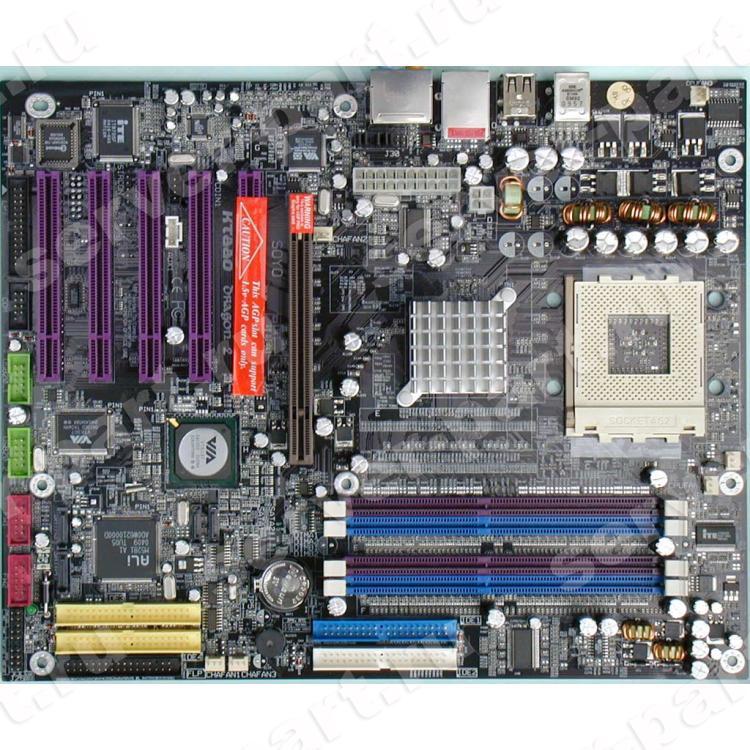

 0/IEEE-1394
0/IEEE-1394 With the new USB 2.0 and ATA133 standards, as well as 333MHz DDR PC2700 DRAM support, system boards have gotten a much welcomed boost in overall performance and features. Today we’ll be taking a look at one of the latest additions to the KT333 lot, the Soyo KT333 Dragon Ultra.
With the new USB 2.0 and ATA133 standards, as well as 333MHz DDR PC2700 DRAM support, system boards have gotten a much welcomed boost in overall performance and features. Today we’ll be taking a look at one of the latest additions to the KT333 lot, the Soyo KT333 Dragon Ultra. ..
.. 2 compliant)
2 compliant) 5 cm x 24.5 cm (12″ x 9.6″)
5 cm x 24.5 cm (12″ x 9.6″)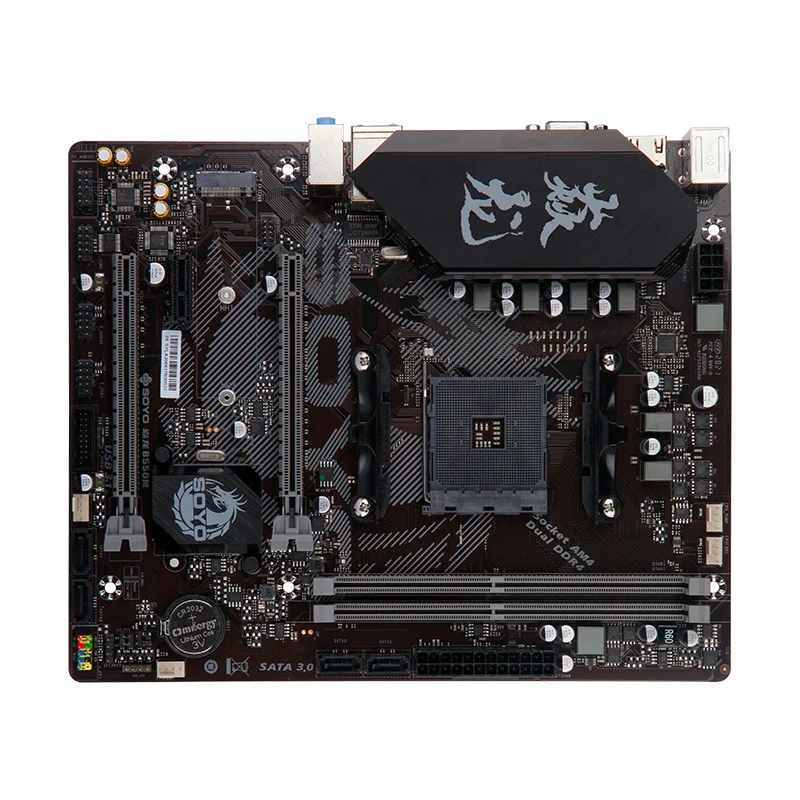 A bonus «Sigma Box» (SB-P4SX) featuring four front USB 2.0 ports is included, with all the hardware needed to mount it in either a 3 1/2″ floppy bay or a standard 5 1/4″ bay. Two USB connector cables are provided to connect the Sigma box to the two USB 2.0 sockets on the motherboard. The Soyo «8-in-1» CD comes complete with the following titles: Norton Anti-Virus 2002, Ghost 2002, Adobe ActiveShare, Acrobat Reader, Acrobat eBook Reader, WinDVD 2000, and trials/samples of AutoSave and Imagemore. All in all, this is a complete and thorough package that should make even the most critical end user more than delighted with all the extras.
A bonus «Sigma Box» (SB-P4SX) featuring four front USB 2.0 ports is included, with all the hardware needed to mount it in either a 3 1/2″ floppy bay or a standard 5 1/4″ bay. Two USB connector cables are provided to connect the Sigma box to the two USB 2.0 sockets on the motherboard. The Soyo «8-in-1» CD comes complete with the following titles: Norton Anti-Virus 2002, Ghost 2002, Adobe ActiveShare, Acrobat Reader, Acrobat eBook Reader, WinDVD 2000, and trials/samples of AutoSave and Imagemore. All in all, this is a complete and thorough package that should make even the most critical end user more than delighted with all the extras. It wasn’t the most robust software, but you had the tools needed to use all of the hardware’s functions. The Audio Rack included with this motherboard is no different. The software is comprised of four key components, a CD Player, Midi Player, MP3/Wave/VCD player and a Mixer, offering a fair amount of functionality.
It wasn’t the most robust software, but you had the tools needed to use all of the hardware’s functions. The Audio Rack included with this motherboard is no different. The software is comprised of four key components, a CD Player, Midi Player, MP3/Wave/VCD player and a Mixer, offering a fair amount of functionality.  13µm Athlon XP should work fine on existing Socket A platforms that support Palomino. The main thing is that the processor is recognized by the BIOS. We tested several KT333 motherboards and this is what we got.
13µm Athlon XP should work fine on existing Socket A platforms that support Palomino. The main thing is that the processor is recognized by the BIOS. We tested several KT333 motherboards and this is what we got.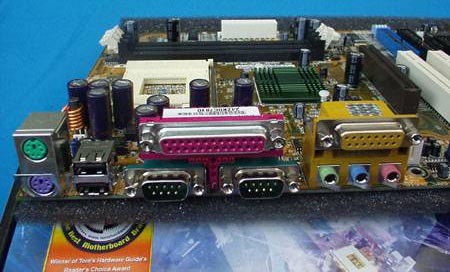
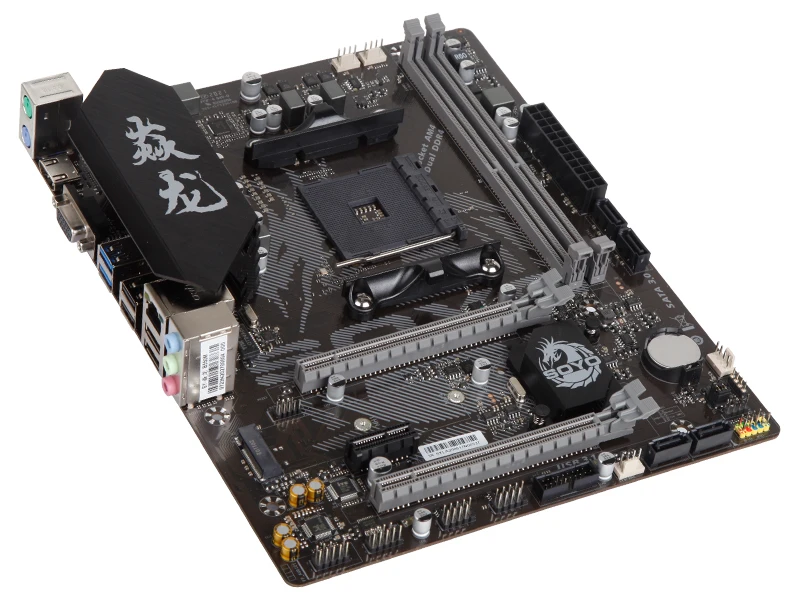 Starting June 10, motherboards must have built-in overheating protections to receive certification from AMD. The price of the required logic is less than $1.
Starting June 10, motherboards must have built-in overheating protections to receive certification from AMD. The price of the required logic is less than $1. 80 GHz) The is the highest frequency we’ve reached at rated voltage and standard cooling — 1822.5 MHz at 135 MHz FSB.
80 GHz) The is the highest frequency we’ve reached at rated voltage and standard cooling — 1822.5 MHz at 135 MHz FSB.
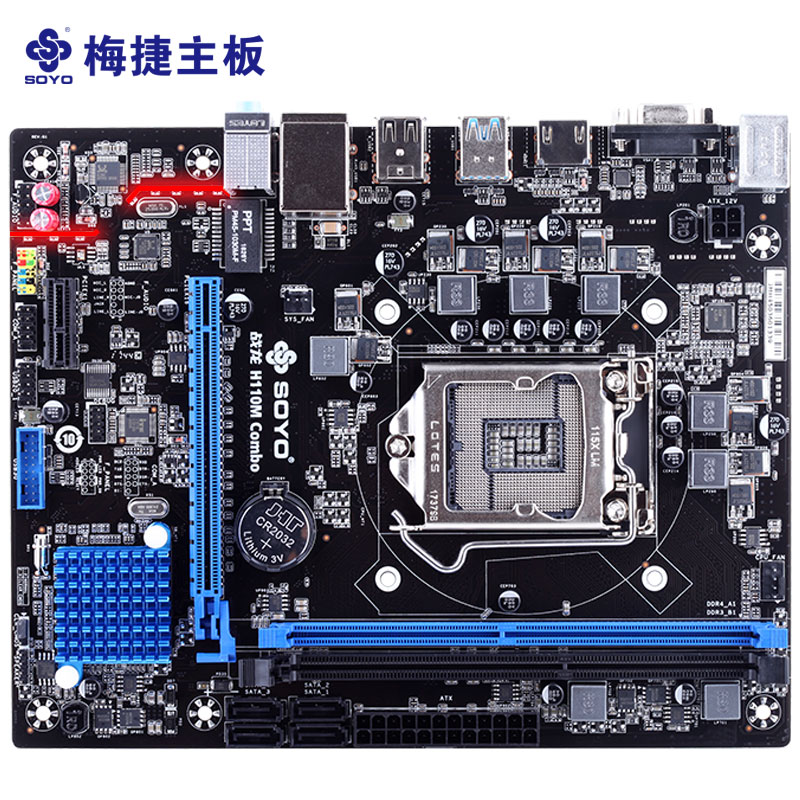
 So if you want to put Thoroughbred on your Athlon XP processor, then throw the aluminum cooler away. Do not use cheap coolers with your processor.
So if you want to put Thoroughbred on your Athlon XP processor, then throw the aluminum cooler away. Do not use cheap coolers with your processor.